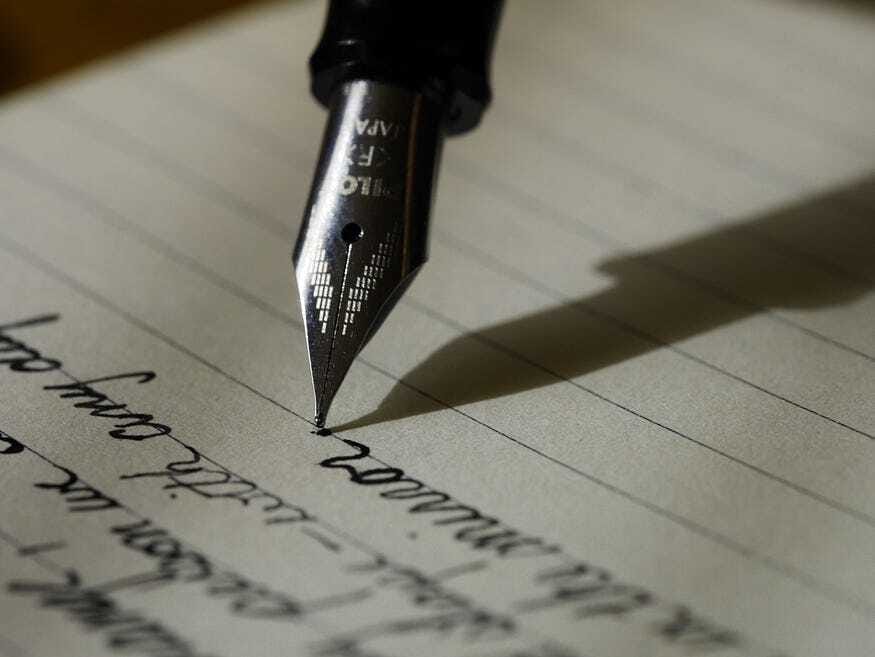
Image by Aaron Burden via Unsplash
As the old adage goes, the hardest part is starting, and nothing could be truer for the aspiring author. Worse is the next step; how do we stay motivated to write, write, and write some more? If you’re anything like me, you face writer’s block, pesky rewrites, and your own high expectations. Luckily, we have the experience of others to draw upon.
In this article, we’ll look at good habits for building a strong writing process. Check out my other articles for deep dives into specific elements of craft.
Building Momentum:
Good habits are the core of every writer’s process. That means cultivating habits just like any other: over long periods of time.
Stephen King is a prolific writer, and this quote of his should give you a good idea as to why:
“Read and write four to six hours a day. If you can’t find the time for that, you can’t expect to become a good writer.”
Of course, not everyone, especially hobbyist authors, will be able to achieve such a work ethic, but the sentiment remains. King represents the importance of forming a consistent routine of writing. It might sound cliche, but hard work pays dividends. Plus, a large body of work will help us in the long run when we need to revise our writing.
It’s hard to write every day, and it’s even harder to keep coming up with ideas to write about. Consider keeping a journal. Write down the daily events, but try to apply different tones or get creative with the word choice. If you aren’t the journaling type, writing prompts can help you get something started that you otherwise wouldn’t have thought twice about.
Free writing is an exercise that authors use when all else fails. Free writing is essentially the act of translating your train of thought into writing. The idea is that as we begin to write, our active, disconnected thoughts will begin to take form on the page unconsciously. The goal of free writing isn’t to write a good first draft, or even a draft at all. Authors use this exercise to shake off the writer’s block and generate new ideas. Any page of a free write can lead to the beginning of a story or a new and interesting perspective.
Keep the Ball Rolling:
My process tends to get blocked the moment I come up with a story-worthy idea. I dig into the first couple of pages, but halfway through I lose interest or write myself into a corner. How can you get out of your own way and get to writing?
One simple strategy employed by many authors is to write around the problem. Is a difficult scene keeping us from making progress in the plot of our story? Or maybe we’re stuck on a single word, sentence, or paragraph; whatever’s in our way, we can simply move around it. By progressing the story and leaving the issue behind, we discover novel solutions to the problem we encountered. Taking time to think through the necessity and function of every line is a big part of being a writer. Usually, when I find myself stuck on something specific, I come to realize that if it’s causing issues, it isn’t worth an inclusion.
Ever heard the saying, “Everyone’s their own worst critic”? In writing this can be especially true. One thing many aspiring authors struggle with is self-doubt. Is this story too long? Is this character relatable? My solution to this problem is to find a worse critic than myself to review my work. Having another pair of eyes to look over our writing is a handy tool to use when we feel burnt out. Oftentimes a casual reader will have nothing but praise for your work, and on the off chance they have constructive criticism, you can take it or leave it. Ultimately, you want to gauge a reader’s reaction to the clarity of your piece. The worst a reader can be is confused; in other words, make sure that your mystery doesn’t turn into wild goose chase.
Revision:
Everyone’s least favorite part of the writing process is revision. At least, it’s my least favorite part.
I was taught that there are two kinds of writers: plotters and pantsers. Plotters carefully construct every draft hoping it to be their last, while pantsers discover as they write and revise. I learned early on that I fell into the plotter category. Individual paragraphs and sentences can take a while to perfect, but once they’re done, they’re done. On the other hand, I’ve had colleagues who wrote full drafts without so much as looking back before ending their story, rereading, and nixing half their work. Whichever side of the spectrum you fall into, revision is a natural and necessary part of the writing process.
The way I see it, there are three different ways to revise:
Add
Remove
Change
When our story feels like it’s lacking something, we have the power to add that something. Many writers will reread their draft and find places to include more detail. In my experience, when a reader is confused with the text, it isn’t because there is too much going on, but because the author didn’t provide enough detail.
Removing a section of one’s story can be a difficult ordeal for any writer. We put pen to paper, and now we have to tear up all our progress? Fret not, most first drafts are filled with unnecessary information. When reading our story, we should ask ourselves if every line serves the story. Is this description characterizing the setting? Is this conversation developing the characters? If we find ourselves asking these questions, we should really consider removing the part that is causing us trouble. Even if the removed section contains your most beautiful prose, it won’t matter if the reader isn’t engaged with the story.
Finally, changing elements of your story is always an available option. No piece of writing is immune to changing over time. You might just get bored with a character’s traits and decide to change them. Keep in mind: all changes must have precedent. If we don’t like the mountain in our setting, we can’t just get rid of it halfway through when it becomes inconvenient. Think of the story like a jenga tower: any careless alterations could topple the tower.
Conclusion:
There you have it, a short, comprehensive guide to the writing process. This is a massive topic that can be covered in several articles, so follow me to get updates on writing craft.
Visit my Twitter.
